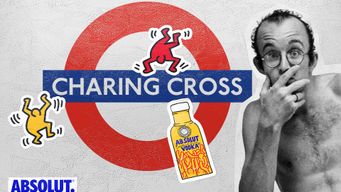By Jessie F. Beeber & Roger A. Colaizzi
Join us as we spotlight select chapters of Venable’s popular Advertising Law Tool Kit, which helps marketing teams navigate the legal risk of campaigns and promotions. Click here to download the entire Tool Kit, and tune in to the Ad Law Tool Kit Show podcast, to hear the authors of this chapter dive deeper into the issue of Understanding False Advertising Claims in this week’s episode.
The first rule of advertising compliance is that advertising must be truthful and not misleading to consumers. In addition, all material advertising claims must be substantiated. When competitors’ ads do not meet those tests, there are numerous venues in which they may be challenged. When challenging competitors’ advertising, it is critical to understand the different ways in which an advertising claim can be false or misleading.
Types of false advertising claims:
The ad is literally false. This is the easiest claim to make, because if an ad is literally false, or false on its face, consumer deception is presumed. For example, an ad claiming, “We are the only manufacturer of BPA-free bottles” is literally false where a consumer can get BPA-free bottles manufactured elsewhere. The claim, however, must be objectively verifiable and not just “puffery,” which is vague or subjective language that the reasonable consumer would not take seriously. Saying “We have the best pizza in the world,” for example, is likely puffery.
The ad is impliedly false. An ad may technically be true but misleading nonetheless. The question is: What does the consumer take to be the message? For example, an ad claiming a product is “cholesterol free” might technically be true but misleading if the product actually raises cholesterol levels. Consumer survey evidence is generally needed to prove the ad gives consumers a false impression.
The ad is “false by necessary implication.” On rare occasions, an ad may be literally true but have only one unambiguous, false meaning in context. Consumer survey evidence is not necessary to prove falsity. For example, the claim “No restaurant chef in New York uses an ABC mixer,” even if true, could be false by necessary implication if ABC does not make a professional-grade mixer, because the only possible meaning in this context is that ABC makes a professional-grade mixer rejected by New York chefs.
The ad is not substantiated. The evidence required to substantiate an ad depends on what the ad says. For example, the claim “two out of three doctors recommend ABC” requires a reliable survey to that effect. Establishment claims, such as claims that “tests prove X,” or “studies show X,” must be supported by “competent and reliable scientific evidence”—i.e., tests, studies, or scientific evidence evaluated by qualified people, using methods accepted by experts.
A comparative or superiority claim in the ad is false. This occurs when an advertiser compares its product with a competitor’s (by name or clear identification, i.e., the “leading brand”) and/or claims the advertiser’s product is superior to the competitor’s. Where the ad is a simple comparison, the competitor must show the ad is false. For a comparative establishment claim, the competitor can win by attacking the tests the advertiser relied on.
To learn about false advertising claims, contact Jessie Beeber or Roger Colaizzi. For more insights into advertising law, bookmark our All About Advertising Law blog and subscribe to our monthly newsletter.


/Passle/5ca769f7abdfe80aa08edc04/SearchServiceImages/2025-12-11-21-58-26-997-693b3e82641ff44fb22be187.jpg)
/Passle/5ca769f7abdfe80aa08edc04/SearchServiceImages/2025-12-09-16-09-55-496-693849d32b43241fe162ee63.jpg)
/Passle/5ca769f7abdfe80aa08edc04/SearchServiceImages/2025-12-09-16-00-22-911-693847962b43241fe162e049.jpg)
